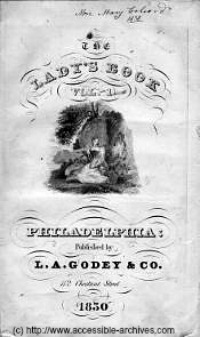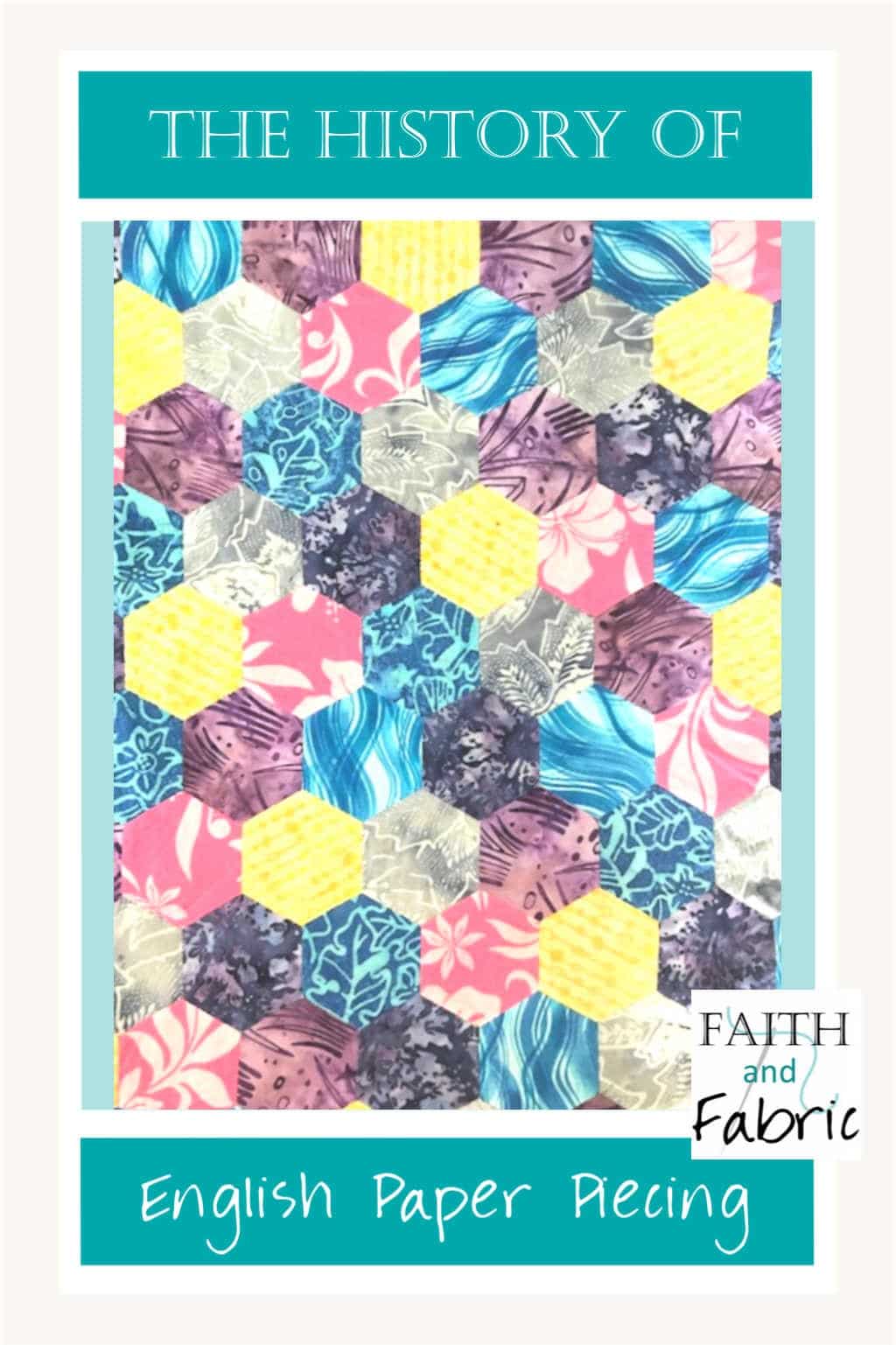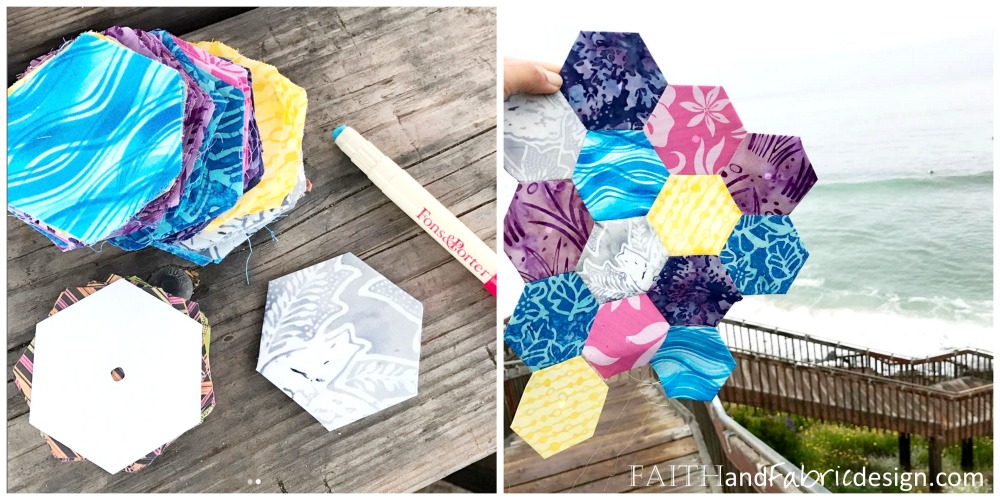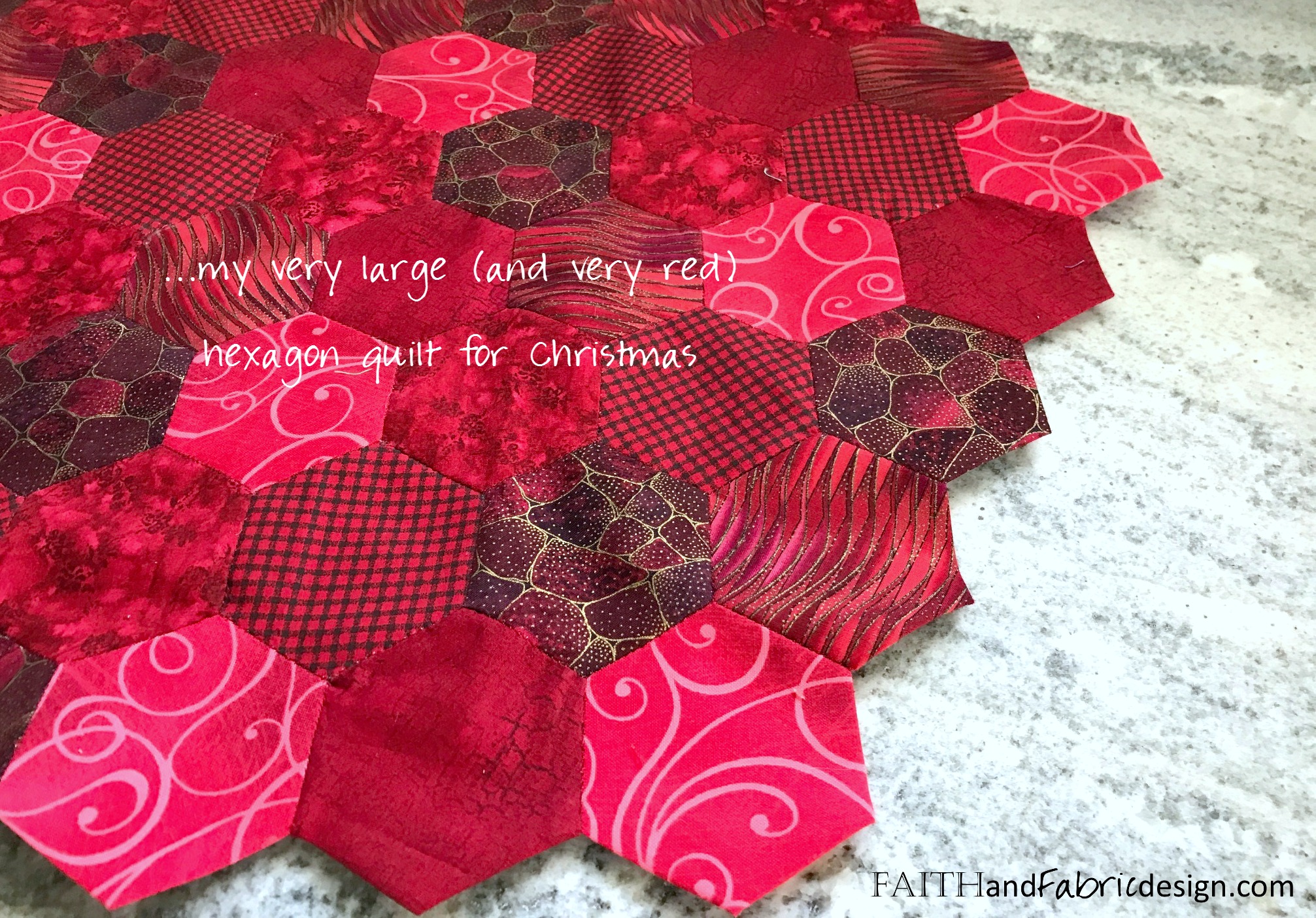English paper piecing is one of my favorite ways to sew slow. Whether it’s at the beach, while watching a show, or gathered with friends over a glass of wine, there’s something so lovely about the feel of hand stitching that brings a sense of peace. A true mosaic patchwork of color, these quilts bring a different feel both during their creation and long after the quilt is finished.
The unique method of English paper piecing involves attaching stabilized pieces of fabric together; a piece of fabric cut is cut in a set shape that is 1/4″ larger than the paper shape template. The fabric is then is basted to the cardstock shape, and the resulting fabric shapes are sewn together to create a design. Once the design is completed, the paper is removed and the fabric retains its shape. Done by hand, this slow stitching method is increasing in popularity, and is a wonderful sewing option for sewing on the go. It’s also a great stash buster – while you can create a quilt from a newly purchased fabric line, the tiny pieces lend themselves *so* well for using up those smaller fabric bits left over from previously completed projects.
Have you ever wondered about the history behind this lovely craft? 
The paper piecing technique again found popularity in the States in the 1920’s and 1930’s; as these quilts are often made with small pieces of fabric (often scraps), their affordability increased their popularity during the Great Depression. Today, one of the most popular patterns is the basic hexagon flower, sewn together to create a Grandmother’s Garden. This traditional shape – which has a hexagon at its center and is surrounded by six same-color hexagons, creates the impression of a flower. Multiple flowers, often surrounded by green hexagons (representing the grass and leaves) are then sewn together into one larger quilt.
If you’re new to paper piecing, it can be hard to figure out where to get started! Fortunately, there are many designs and books available from which you can select a project. If you’re like me, one of the first places you’ll start is with hexagons. They’re a simple way to start, have precut shapes that are widely available, and are (almost) effortless for a first project! A few years ago, I created an extra-large red hexagon quilt made of many smaller red hexagons using simple precut paper piecing shapes. It was the perfect project to keep in my oversized purse, and I worked on it during vacations, gymnastics lessons, and airline flights.
If you’re a more experienced paper piecer, you might be up for a bigger challenge. There are some wonderful books out there that use a variety of shapes, such as triangles, clam shells, and pentagons, to create absolutely beautiful quilts. My favorite patterns include those that speak to my fussy-cut loving heart! My new favorite EPP book includes over 50 paper piecing designs, all set in modern prints.
Just for fun, this post links up at some of these great quilting sites!





I love EPP! I have a Grandmother’s Garden started and I’ve finished 2 table runners. I hope one day to do a Lucy Boston block quilt.
I’d love to see photos of your garden quilts sometime!
Thanks for the link-up!